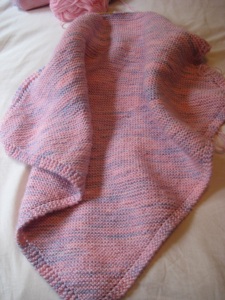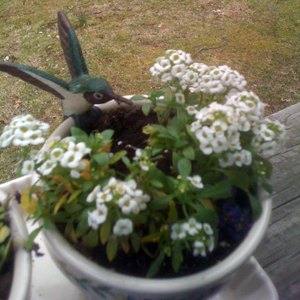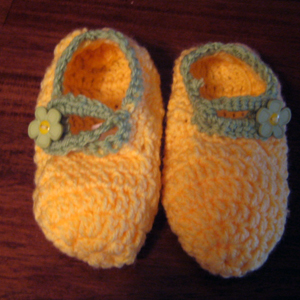Many times the difference between a well made project and an outstanding project is the uniformity of the stitches made. Making even stitches is a critical skill for hand knitters. Tension can be affected by your tension in life. Your moods change your stitch uniformity. Try to put aside the daily stress and go on a knitting “get away”. Think about who your knitting for or concentrate on the action of knitting to melt the stress away.
The first step in making uniform stitches is realizing or determining that your stitches are or are not uniform. The best way to check the uniformity of your stitches is to knit a 4” x 4” swatch in Stockinette Stitch (knit one row, purl one row), using light color worsted weight yarn. Examine your swatch, check the right side (smooth side), look at each stitch. Are they all the same size?
Here is a picture of an uneven knit stitch:
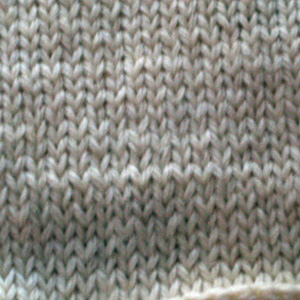
uneven stockinette stitch
Flip the swatch over to the wrong side (bumpy side). Are there gutters between the rows? Gutters look like large spaces between the rows. A gutter is shown in this picture:
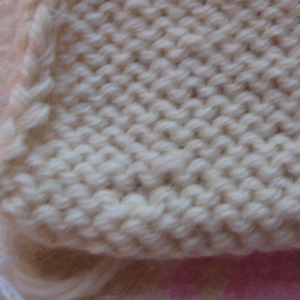
Gutter
If your stitches look to be about the same size and you do not have any gaps in the rows on the wrong side than great! Your knitting is even and the stitches are uniform. If you see some inconsistencies, don’t worry there are ways to improve the tension and increase the quality of your finished projects.
New knitters tend to have inconsistent tension. If you are new to knitting, practice. That’s not hard having to knit more is a great thing. As you put in more hours of knitting you will see the quality of your stitches improve dramatically.
If you have been knitting for awhile than you need to examine and adjust how you are knitting. Usually tension problems arise because the purl stitch takes more yarn than the knit stitch. Stop and think about how we make a knit stitch vs. how we make a purl stitch and you will see what I mean. There is more yarn required to make a purl stitch. One thing to try is to tighten up on the yarn when making a purl stitch. Hold your yarn a little tighter; give a gentle tug on the yarn prior to making the stitch. This may be all you need to do.
Changing needle material or size can help. If your yarn slips or sticks too much your tension will be uneven. Experiment with different needles to see which ones work best for you. Experiment with different yarns but be careful not to trick yourself by using a yarn that disguises the tension inconsistency, use different light color, worsted weight yarns. Try different manufacturers.
When making the purl row try using a smaller knitting needle. I would start with one size smaller. That should be sufficient in tightening up the purl stitch.
Constructing the purl stitch differently can also produce positive results. When making your purl stitch if you bring the yarn under the needle rather than over the needle you use less yarn. It is important to remember that if you use that method when you knit the next row you knit through the back loop rather than the front loop of the stitch. If you don’t knit in the back loop and do a “normal” knit stitch you will produce a twisted stitch.
The most important thing is test each solution individually. Mark what you did different on each swatch. Be methodical with your findings so when a solution is found you know which solution did the trick. My next tension article will address inconsistent stitches on the selvage end of your projects.
I would love to hear from you. Do you have a problem with tension? How do you fix it? What works, what doesn’t? Please post and hints or suggestions on how to improve the quality of our knitting.
Thanks everyone, happy knitting!
